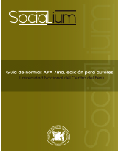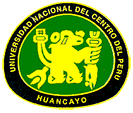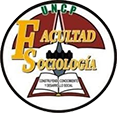Sustainable use and conservation of biodiversity in the district Antioquia - Huarochiri
DOI:
https://doi.org/10.26490/uncp.sl.2022.6.2.1333Keywords:
sustainable use, biodiversity care, sustainable developmentAbstract
The objective of this research is to determine the influence of sustainable use on the conservation of biodiversity in the district of Antioquía-Huarochirí, the research has included the community members who, through the NGO CIED in 2007, temporarily achieved economic development and social, thanks to the skills of the community members and credit support. Its development was achieved due to the planting of typical organic fruits of the place such as apples and quinces, however the community members asked that the NGO withdraw so that they can make their own decisions. This meant the neglect of the sustainable use of natural resources and the non-conservation of biodiversity. Today, the land is no longer productive as it was 14 years ago, the fruits do not have the same flavor, there is no relationship between sustainable use and the conservation of biodiversity, it is difficult for them to spend on organic inputs to produce fruits with the same characteristics. The research was carried out with a qualitative strategy of descriptive exploratory level. 5 community members were selected, of them, 3 were managers. Before applying the interview, they were informed of the visit to this community, the same one that did not materialize due to the COVID-19 pandemic, the data has been obtained through cell phone calls, therefore, that tourism was an alternative and is the activity that allows them to generate income for their families.
References
Alfaro J.C. y Claverías R. 2010. Diagnóstico socioeconómico de la cuenca del río Lurín [Consultoría sobre Sistema de Monitoreo y Evaluación, Línea de Base y Mapa de Actores]. Lima, Perú: Centro Global para el Desarrollo y la Democracia (CGDD), Centro de Investigación, Educación y Desarrollo (CIED). https://docplayer.es/37031830-Diagnostico-socioeconomico-de-la-cuenca-del-rio-lurin.html
Brack, A. (2000). Ecología del Perú. Programa de las Naciones Unidas para el Desarrollo. Editorial Bruño. Lima.
CTI. (2011). Ciencia Tecnología e Innovación para el Desarrollo. mww.cepal.org›iyd›noticias›pais›bolivia_doc1
Claverías, R. (2008). Desarrollo Territorial y Nueva Ruralidad en el Perú: Experiencias y propuestas del CIED 1990-2007. Desarrollo Territorial y Nueva Ruralidad en el Perú : CIED https://www2.congreso.gob.pe/sicr/cendocbib/con4_uibd.nsf/9AE74E14E19C055305257B6E0079C14D/$FILE/26062012194607_desarrollo_territorial_final.pdf
Fuller, N. (2011). Reflexiones sobre el turismo rural como vía de desarrollo: El caso de la comunidad de Antioquía, Perú. Estudios y perspectivas en turismo, 20(4), 929-942. http://www.scielo.org.ar/scielo.php?script=sci_arttext&pid=S1851-17322011000400010&lng=es&tlng=es.
Gallopín. G (2003). CEPAL. Medio ambiente y desarrollo. Santiago de Chile
Informe Brundtland (1987). Nuestro Futuro Común. (Our Common Future) Comisión.
Jiménez, L (1997). Desarrollo Sostenible y Economía Ecológica. Editorial Síntesis, S.A. Madrid. Serie. Actualidad
ONU. (1987). Informe sobre la Pobreza en América Latina. EE. UU.
Instituto de Recursos Mundiales (1992). Estrategia global para la biodiversidad: guía para quienes toman decisiones. Instituto de Recursos Mundiales (WRI), Union Mundial para la naturaleza (UICN) y Programa de las Naciones Unidas para el Medio Ambiente (PNUMA). http://pdf.wri.org/estrategiabiodiversidadespguia_bw.pdf
Downloads
Published
Issue
Section
License
Copyright (c) 2022 Zoila Irene González Farroñay

This work is licensed under a Creative Commons Attribution 4.0 International License.








.jpg)















